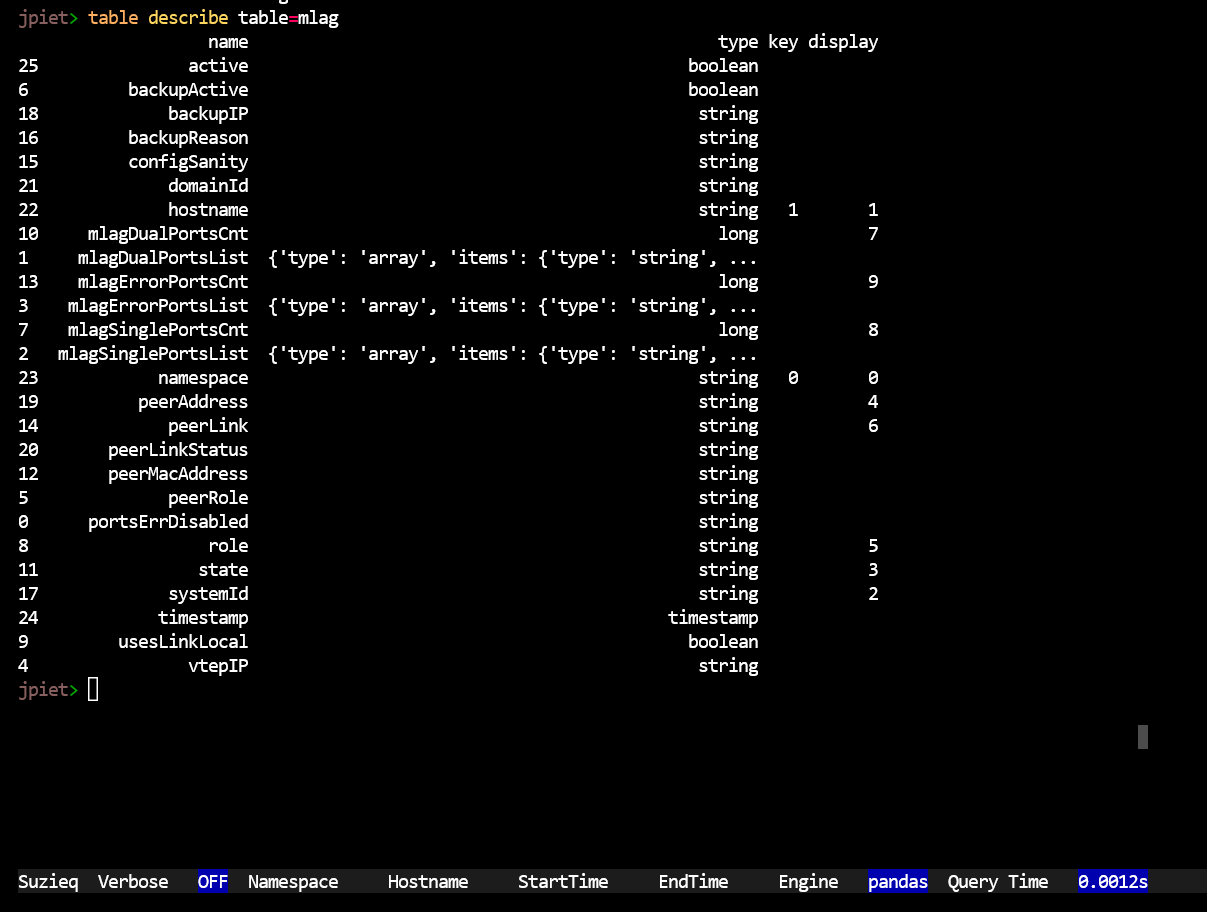How to reason about your network with Suzieq verbs
As we've mentioned in our Introduction, the Suzieq cli has commands, verbs and filters. We are going to address verbs.
Almost every command has three common verbs: show, summarize, and unique. Another set of common verbs are top and assert. Some commands have other verbs specific to them as well.
show
Show is the most basic verb. Every command has a show verb. It will return the most basic data for that command. Often there is a direct mapping from a service to a command, and the show command will show data from that table.
The show verb, like the others, allows filtering. For show, the columns filter is especially useful.
bgp show is a good examples. It gets it's data from a single table and it shows a limited number of the columns available.
bgp show
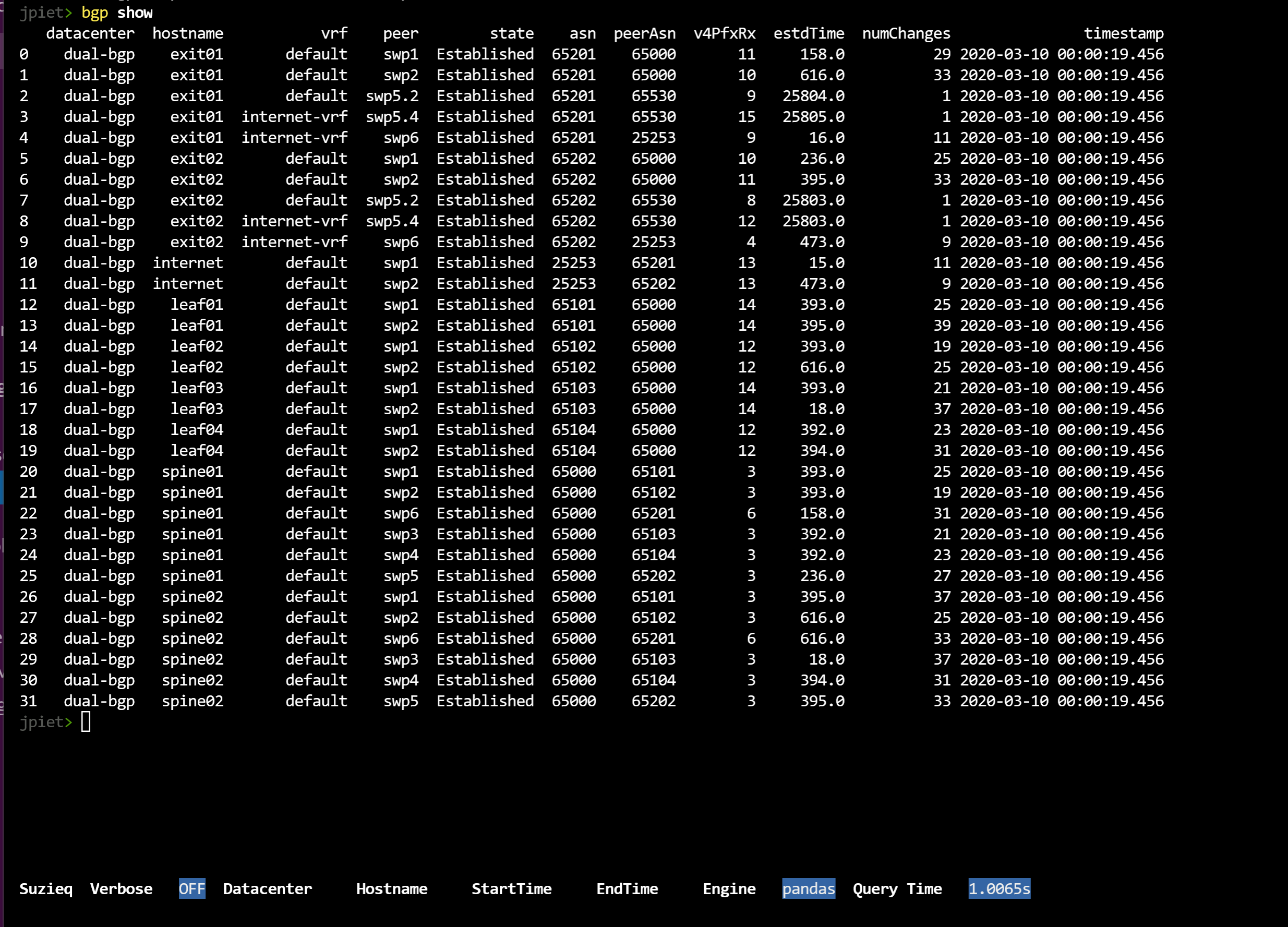
Path show looks some different in that you have to provide more arguments for it to work. Path displays the path between two endpoints so it requires a src and dest.
path show src='172.16.1.101' dest='172.16.4.104' namespace=dual-bgp
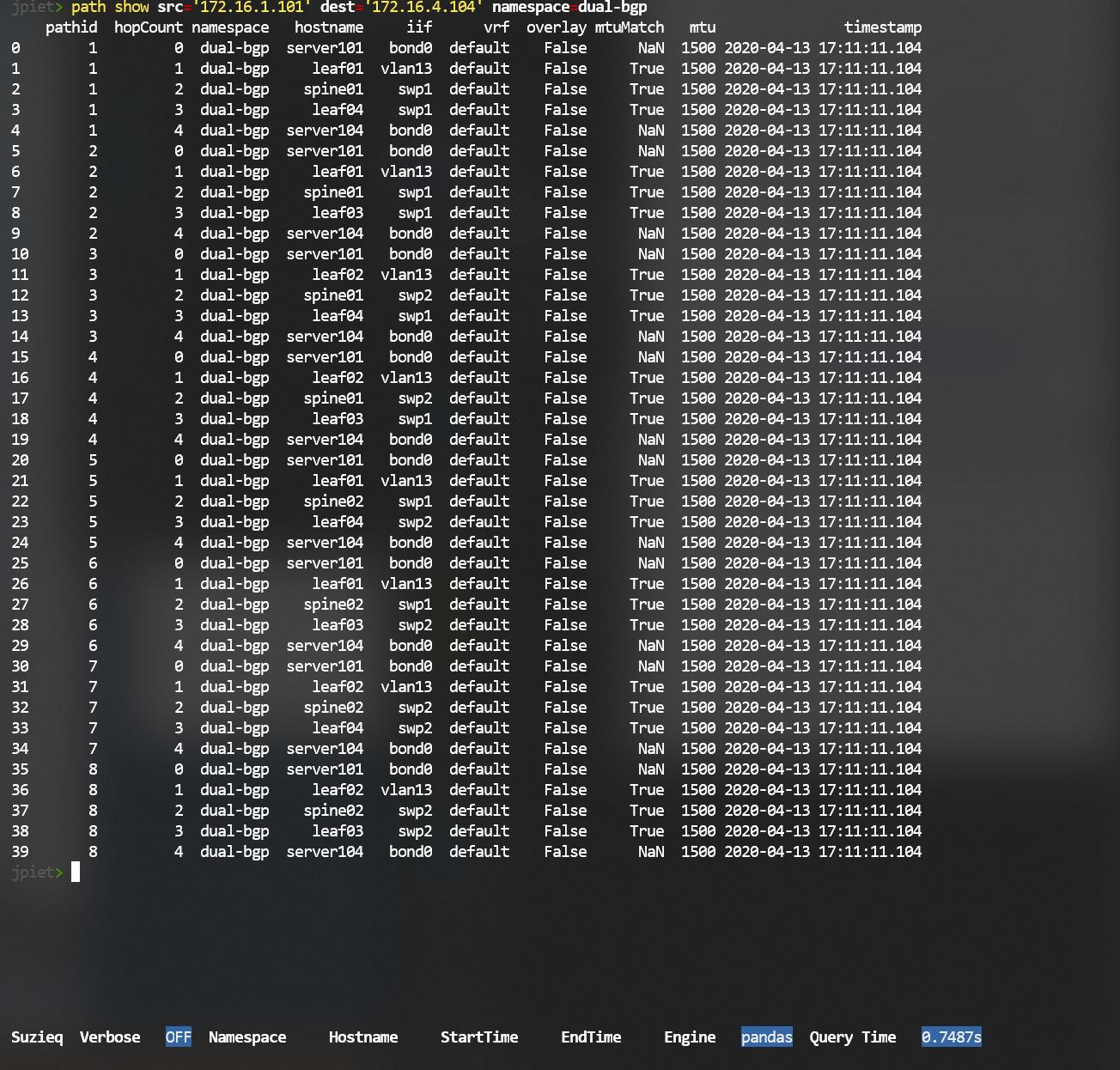
table show
Table show looks a bit different than the other commands, because table show is showing
the tables in the database, not directly looking at data inside tables.
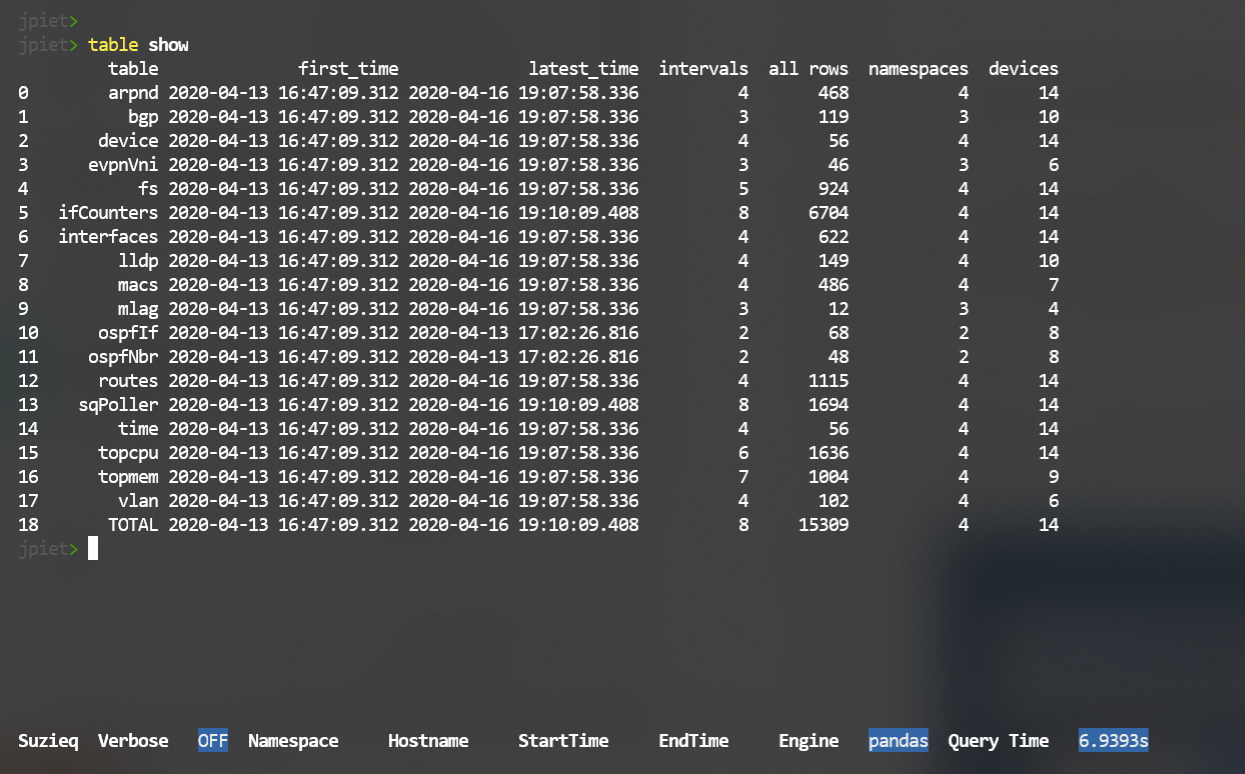
Some of the tables have a lot of columns. We have a standard set of default columns for each table. However, you can add a columns= filter to add more columns or see less. columns=* shows all the columns. This examples show looking at specific data by using columns= filter.
bgp show namespace=ospf-ibgp columns='hostname vrf peer peerHostname state asn bfdStatus updateSource'
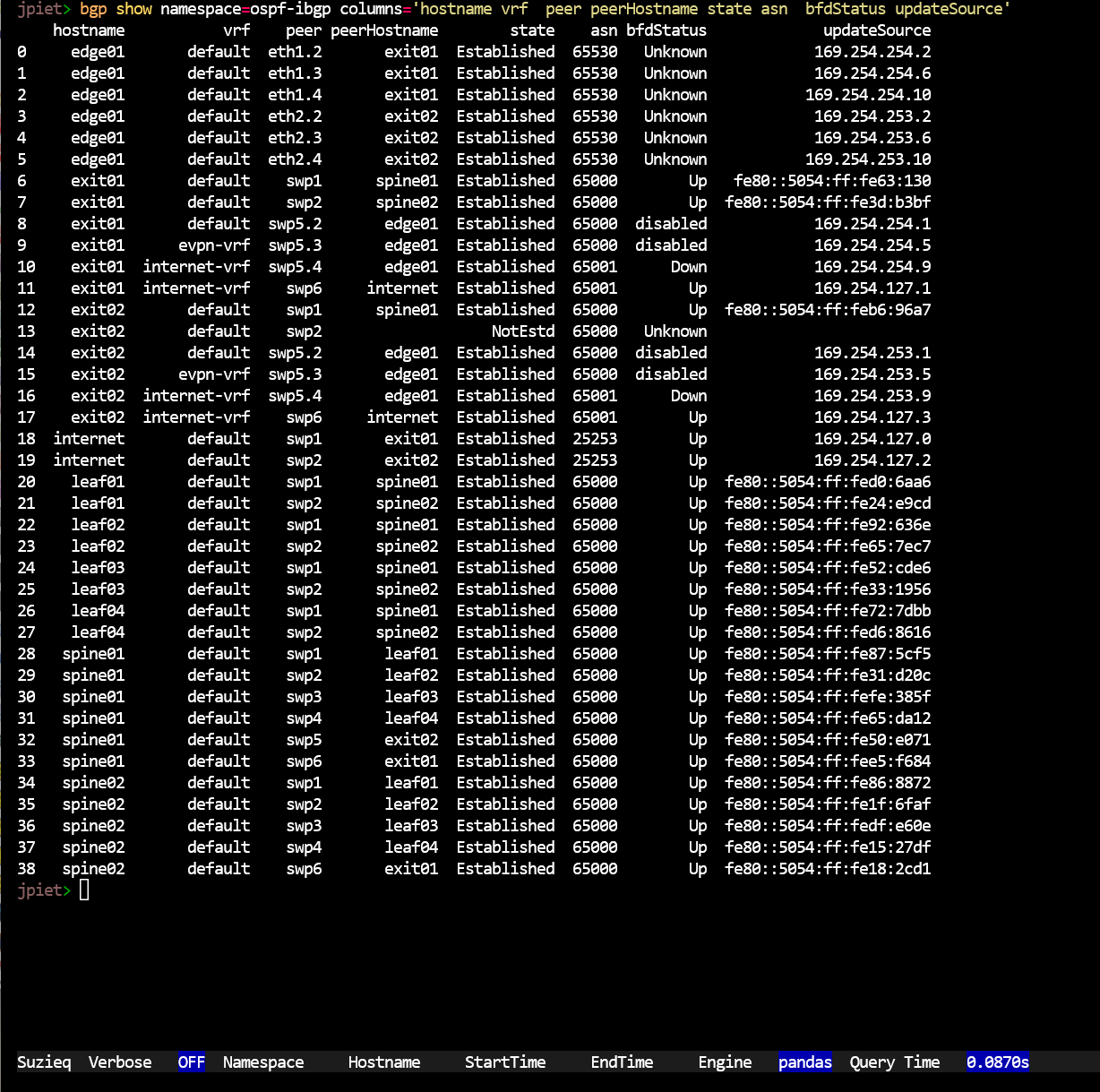
Some commands have specific filters. If you want to look at specific interface types, such as virtual interfaces
interface show namespace=ospf-ibgp hostname=leaf01 type='vxlan vrf vlan'

if you want to investigate why bgp sessions are failing
bgp show namespace=single-attach_bgp_numbered columns='namespace hostname vrf peer state reason notifcnReason lastDowTime'

summarize
Summarize works through the data in the table and produces a summary of what Suzieq thinks are the most important information.
device summarize namespace=ospf-ibgp
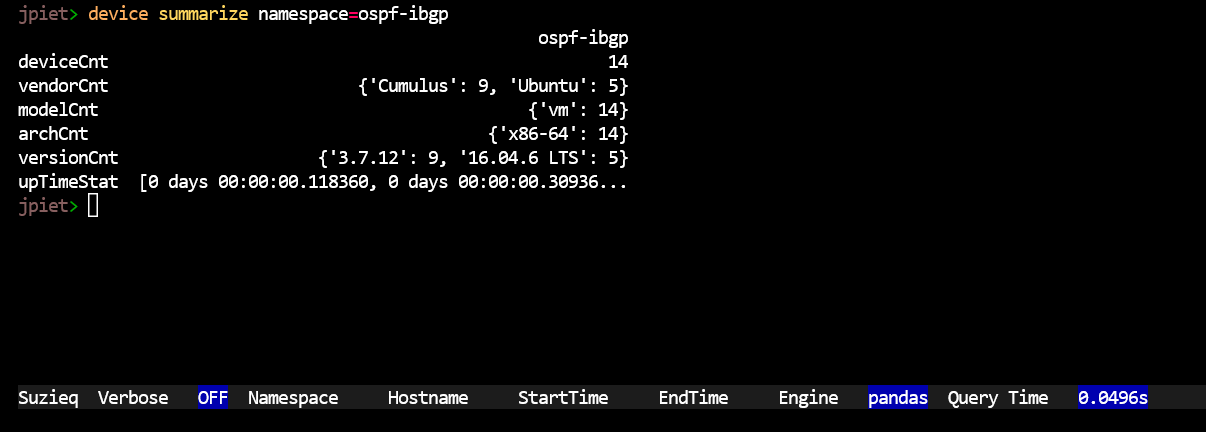
In any of our summaries, statistics that end with Cnt, such as vendorCnt, if there are three or less of them, then we break out the items and provide their count. In this example, there are 2 vendorCnts, which are Cumulus and Ubuntu. Statistics that end with Stat, such as upTimesStat, shows lists of three items bracketed in [] show [min, max, median] of the values to give you an overview of the distribution. For any of these values, you can use the ‘unique’ verb to dive into the column and see the whole list.
ospf summarize namespace=ospf-ibgp
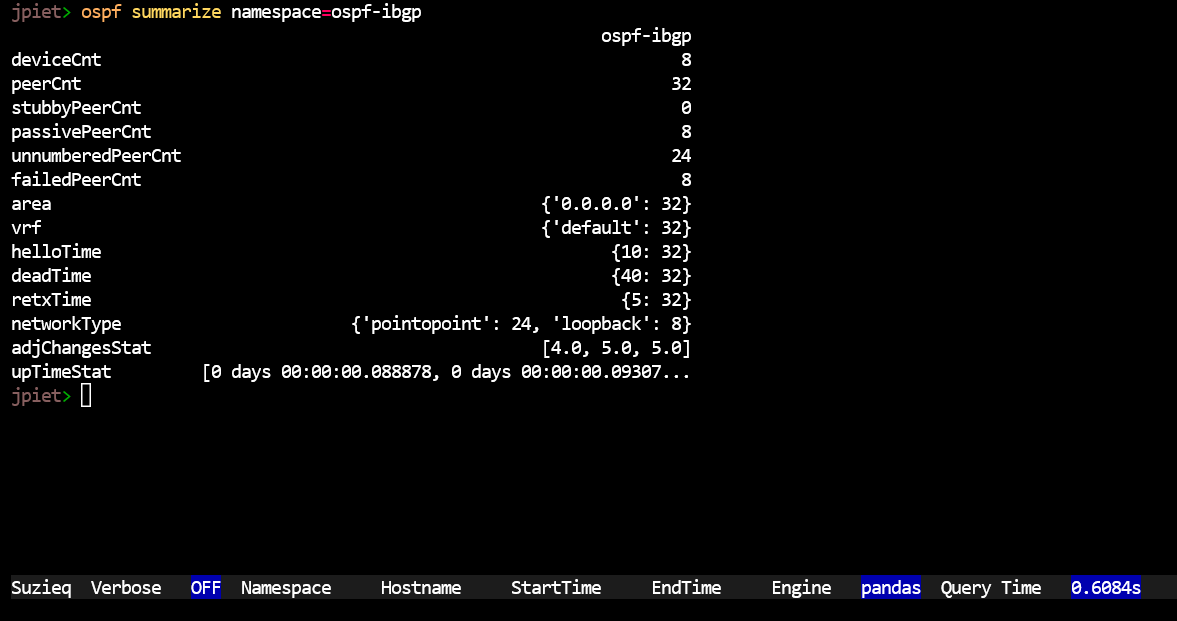
path summarize src='172.16.1.101' dest='172.16.4.104' namespace=dual-bgp
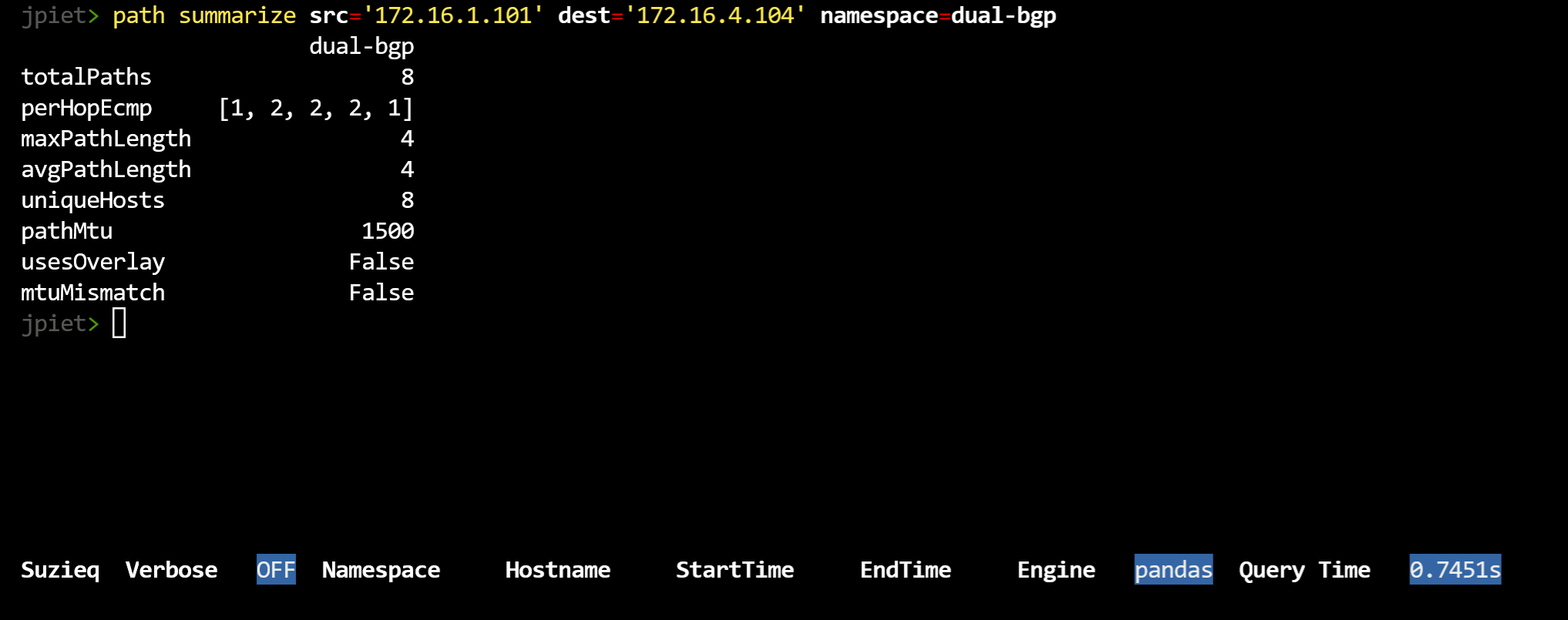
unique
Unique takes a single column and produces the list of unique items and the count of how many times that item occurs. unique does not work on the path command. unique is very useful for diving in to understand the details of your network.
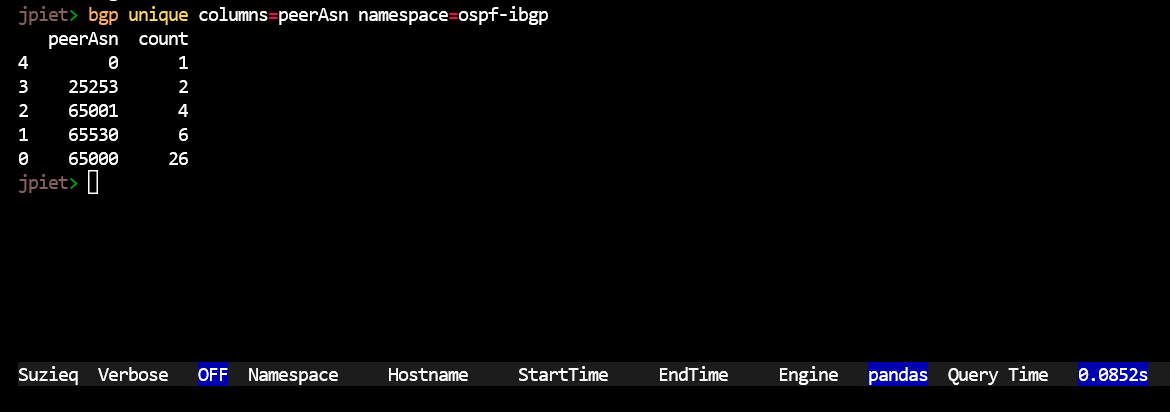
assert
assert works on bgp, evpnVni, interface, and ospf. asserts run checks that must be true for a network to be running correctly. For each service that has an assert you get an output that shows all the data necessary for the checks, a pass/fail column and a reason column for any failed checks.
top
top shows the top items from this command. top works on interface and device.
interface top what=flaps count=10

device top what=uptime

lpm
lpm only works on the route command
route lpm address='10.0.0.112' namespace=ospf-ibgp

describe
describe only works for the table command
table describe table=mlag
